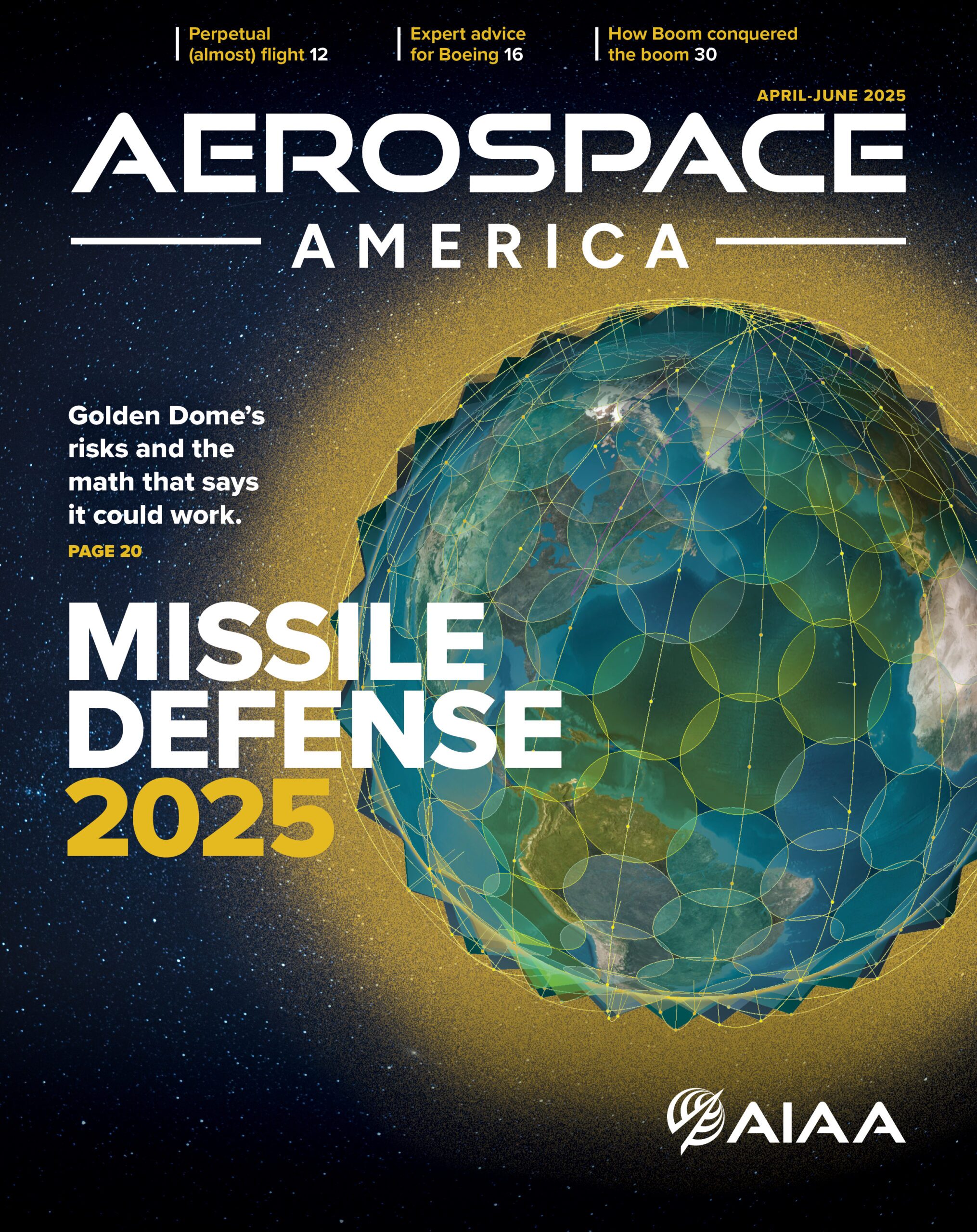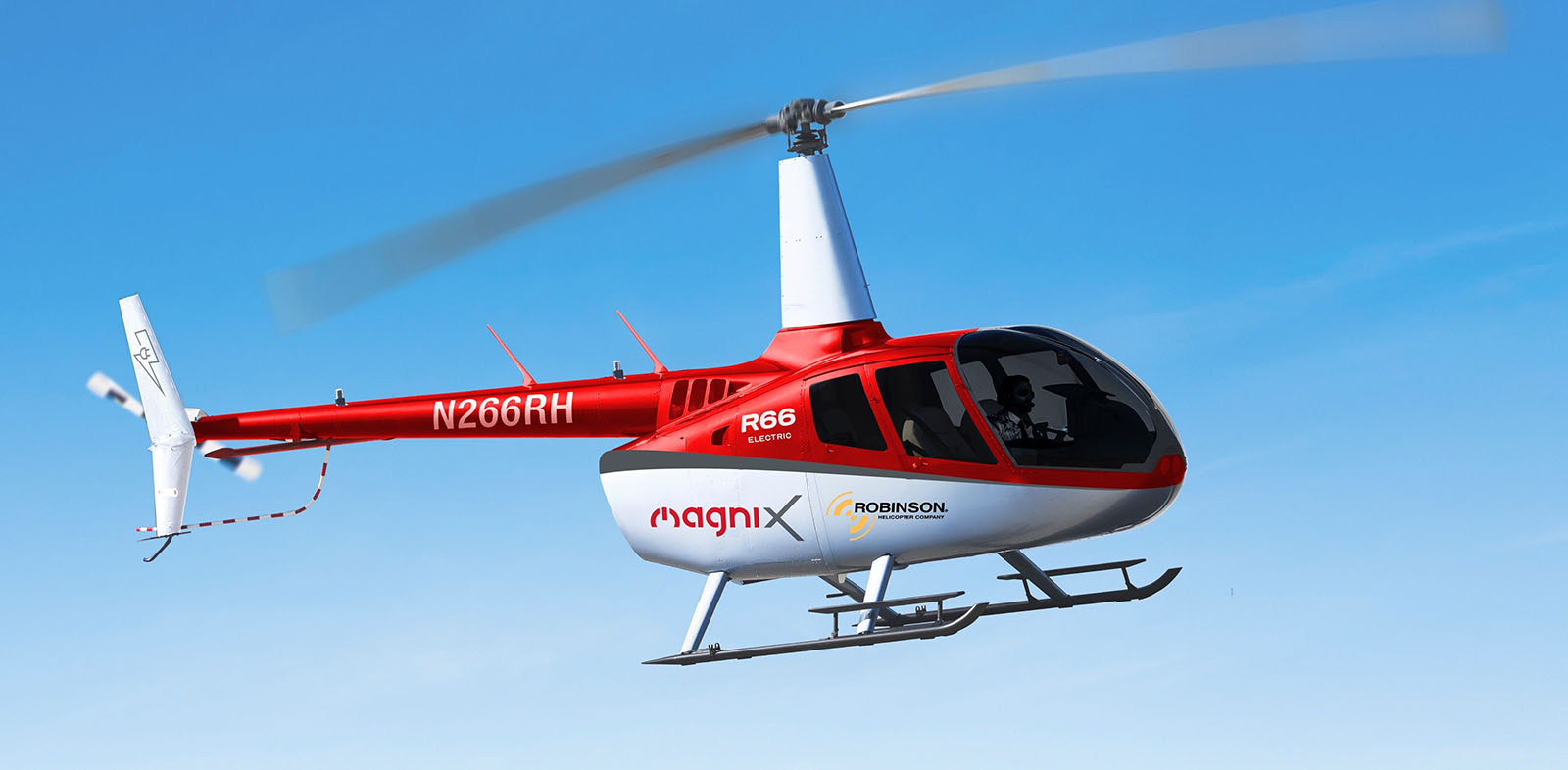Stay Up to Date
Submit your email address to receive the latest industry and Aerospace America news.
A conceptual illustration of the planned eR66. Credit: Robinson Helicopter and magniX
Robinson Helicopter has built about 1,500 light gas-turbine R66 helicopters since 2012. Now, the California-based company wants to turn its attention to electrification and join the burgeoning movement in aviation.
“Robinson already has an aircraft that is certified and in commercial, mass production, so we have a massive advantage over any product being developed from scratch by a company with little or no infrastructure, distribution, supply chain,” Robinson CEO David Smith told me.
Smith traveled to Wisconsin in July for the EAA AirVenture air show, where he joined Reed MacDonald, CEO of electric propulsion developer magniX, to announce the R66 conversion. MagniX is to provide the electric powertrain, which includes its Samson batteries and HeliStorm engine, a lightweight design that magniX said was created specifically for rotorcraft.
“We will just take the Rolls-Royce engine out and you put this new motor in,” Smith told me. “It’s a much, much smaller package, and it has cooling systems and lubrication very similar to what we already have. And so that swap is not as different as people might think.”
From the outside, the new eR66 variant will appear nearly identical to the conventional fuel version. Inside the craft, “the biggest visual difference will be the giant, high voltage power lines from the battery inverter into the motor,” Smith said. “It will look like spaghetti, big spaghetti, but it will fit generally in the same spaces we already have hoses and equipment, and it will connect to the same physical hardware, same drivetrain, same gearbox.”
He said that electric power would mean quicker response time between the controls and the mast that drives the rotor. “We will be able to tune the response time, because instant torque can actually damage the gear boxes, and we can also adjust it for pilot preference,” he said.
The eR66 will have an estimated range of 185 kilometers, compared to the standard version at 650 km. That’s an admittedly short range for such craft, Smith acknowledged, but it is adequate for tourism and training flights.
“Tourism flights are a big part of the R66 market, and an electric version will address concerns about emissions in natural areas and will be significantly quieter, cutting up to a third of the noise,” he said. “And most of that will be the annoying noise of the gas turbine itself.”
All those factors together give Robinson confidence the eR66 will be an attractive alternative to the various electric air taxi designs in development, none of which have yet received type certification from FAA.
Of particular concern for that emerging industry, he noted, is the likelihood that eVTOLs will have to hover more than expected during passenger flights.
“The batteries will see longer hovering, like if you have a rejected landing, you’re going right back up and you’re coming around, which demands high power from the engine,” he said, “and that can happen because of wind gusts, people on the landing site, any number of things.”
He expects the eR66 to avoid this issue due to its single large rotor, which he said was designed for vertical takeoff and landing and therefore won’t require as much power in hover mode.
This rotor also rotates significantly slower than multiple lift propellers on many eVTOLs, he said, which would sound like “drones over your head, bumblebees or hummingbirds in your ear.”
When it comes to safety, Smith views an electric helicopter as safer because of its ability to shut off all power to the main rotor and autorotate to descend, meaning the rotor blades are driven by the upward flow of air rather than the engine.
And despite growing interest in electric propulsion, he predicted the aviation industry will continue to require both electric and gas-powered aircraft for the foreseeable future.
“General aviation will have a 50-year, maybe 100-year journey, where we’re going to be flying jet- powered helicopters and electric motor helicopters. We might have some of the hydrogen fuel cell weighing in as well,” he said. “And all of those, I think, can and will co-exist at various levels for decades and decades to come.”
About paul brinkmann
Paul covers advanced air mobility, space launches and more for our website and the quarterly magazine. Paul joined us in 2022 and is based near Kennedy Space Center in Florida. He previously covered aerospace for United Press International and the Orlando Sentinel.
Related Posts
Stay Up to Date
Submit your email address to receive the latest industry and Aerospace America news.




